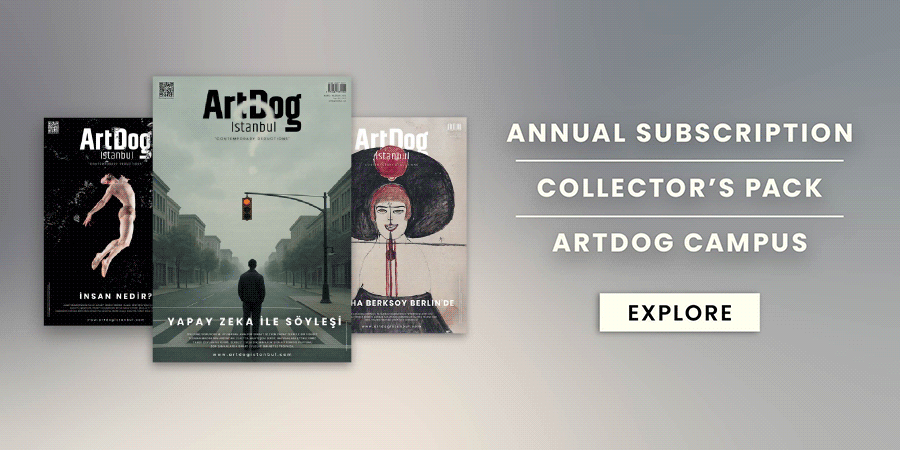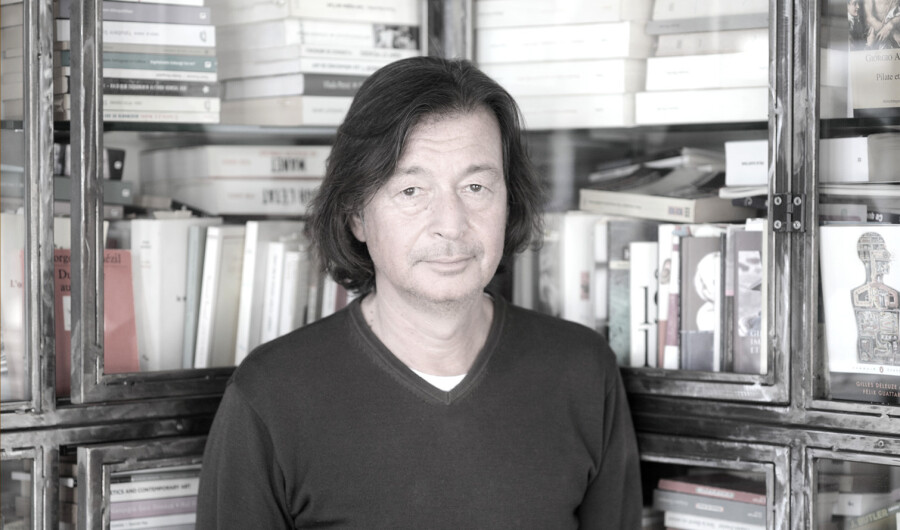Visual depictions of political figures, from historical paintings to carefully constructed photographs, play an active role in shaping public opinion. Portraits of political figures have regained prominence, as seen with the portrait of King Charles, and they continue to hold significance in art history. We have gathered portraits of political figures who have influenced both Turkish and global politics.
King Charles
The first official painted portrait of King Charles III since his coronation has been revealed at Buckingham Palace. This large oil on canvas depicts King Charles in the uniform of the Welsh Guards. The striking red piece, approximately 8ft 6in by 6ft 6in, was created by Jonathan Yeo, known for painting Tony Blair, Sir David Attenborough, and Malala Yousafzai. Queen Camilla reportedly viewed the painting and told Yeo, “Yes, you’ve got him.” The portrait shows the King holding a sword, with a butterfly perched on his shoulder.
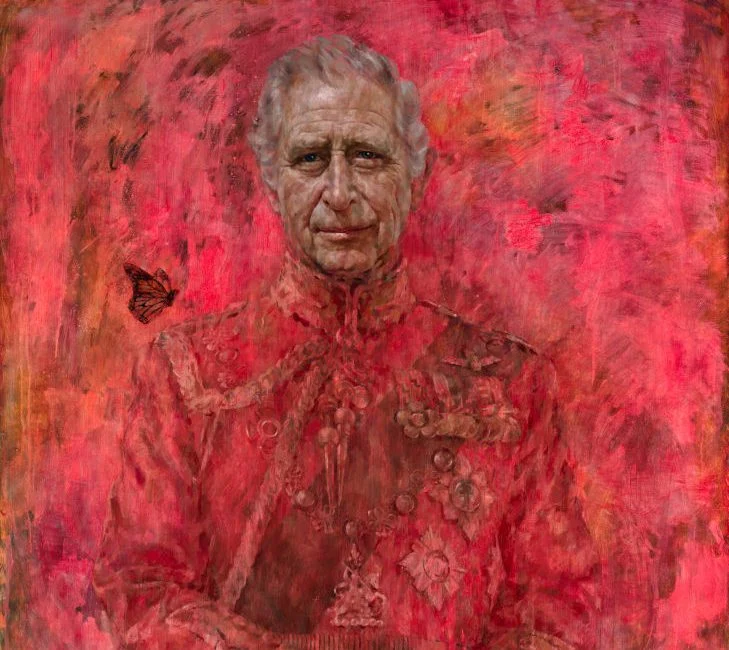
The portrait received immediate criticism. New York Times critic Vanessa Friedman found the primary color of red particularly unsettling. Conversely, journalist Danielle Cohen suggested in an article for the Cut that Charles’ face resembled a disembodied ghost of death floating among violent brushstrokes. Social media comments were predictably harsh, with some likening the portrait to “Hell’s Archdemon”, “Satan”, and “a gate to the hellish realm”, among other brutal metaphors.
Portrait of Atatürk by İbrahim Çallı
İbrahim Çallı (1882-1960) was one of the leading Turkish impressionist painters who had a personal connection with Mustafa Kemal Atatürk. He greatly admired Atatürk and painted his portrait successfully many times, following the style of the Austrian painter Wilhelm Victor Krausz (1878-1959). Çallı’s best portraits of Atatürk are considered to be those from the 1930s, where he often depicted Atatürk in a sitting position with one arm resting on the edge of a chair.
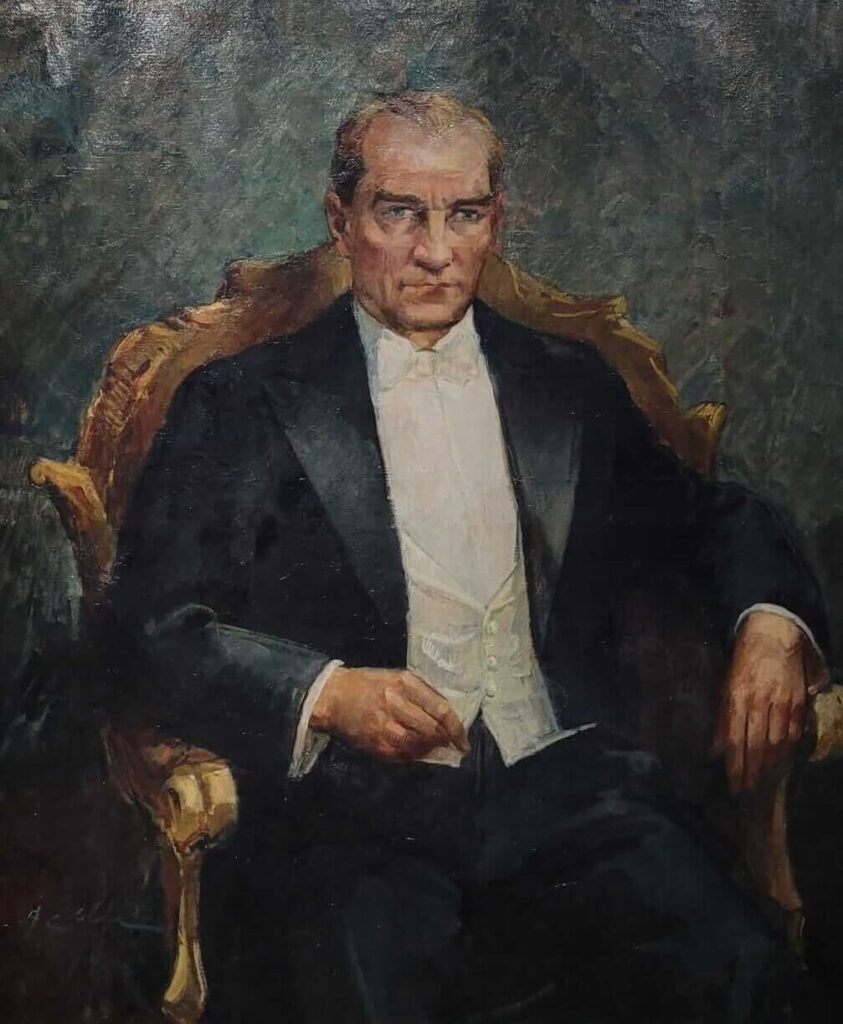
Although Çallı has various drawings and sketches, the most famous Atatürk painting is the 143×121 cm portrait “Cumhurbaşkanı Gazi Mustafa Kemal Paşa,” which is currently in the Istanbul Painting and Sculpture Museum’s inventory. In this portrait, Çallı gives depth by playing with the surface colors behind Atatürk’s chair. To prioritize Atatürk’s presence, he carefully did the textural work. Also, Çallı painted a portrait of İsmet İnönü in 1939.
Portraits By Timur Çelik
Timur Çelik, known for creating large, hyper-realistic portraits, has painted many influential politicians of Türkiye. These include President Recep Tayyip Erdoğan, Kemal and Selvi Kılıçdaroğlu, Selahattin Demirtaş, Süleyman Soylu, and Osman Kavala.
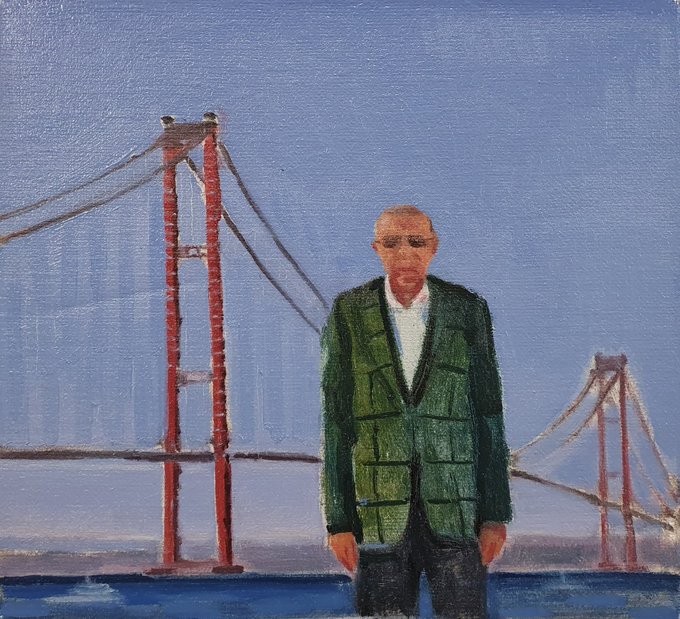
Timur Çelik, who was born in Türkiye in 1960 and has been living and working in Berlin since 1993, carries Türkiye’s political agenda and politically active figures into his paintings through his own perspective. The artist often shares his paintings on social media. Timur Çelik, along with painting political figures, also portrays current political events in Türkiye in a realistic style.
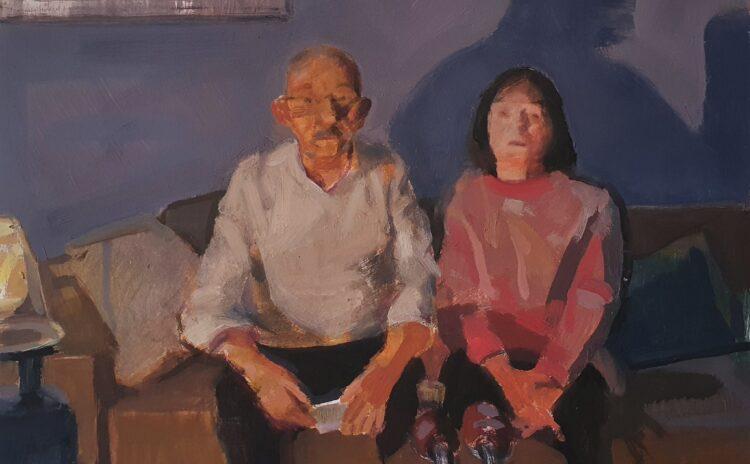
Cihat Burak’s Turgut Özal
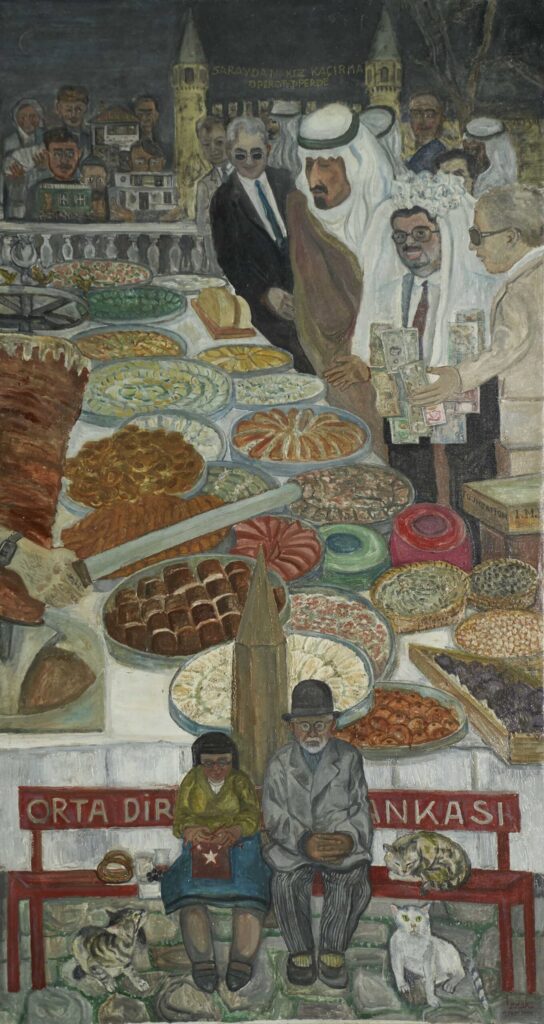
Cihat Burak stands out in art history as a painter who critically conveyed the political events of his time. Cihat Burak’s painting “Sultan Sofrası” (1984) depicts a reception dinner organized by then Prime Minister Turgut Özal for representatives of the International Monetary Fund and Gulf countries. Burak reflects the political atmosphere of the 80s with a combined perspective of art and politics. In the painting “Sultan’s Table”, the economic breakthroughs of 1980s Türkiye and the popular political figures of the time can be analyzed through the indicators used in the painting.
Güney Soykan

Amsterdam-based Turkish artist and graphic designer Güney Soykan created a collage work titled “Face of a Nation.” The piece features portraits of world leaders from different eras. Soykan’s concept for the project invites us to question what a leader represents. He explains, “I thought that if I put all the portraits of elected political leaders on a timeline, that face would be a historical reflection of that country. This visual data can help to see how society has evolved over the decades.”
Emmanuel Macron
Recently, a black-and-white image of French President Emmanuel Macron punching a bag was shared on his Instagram page. The photo was taken by Macron’s professional photographer, Soazig de la Moissonnière, who is always with him. As soon as the photo was published, social media and news sites compared the politician and Rocky Balboa.
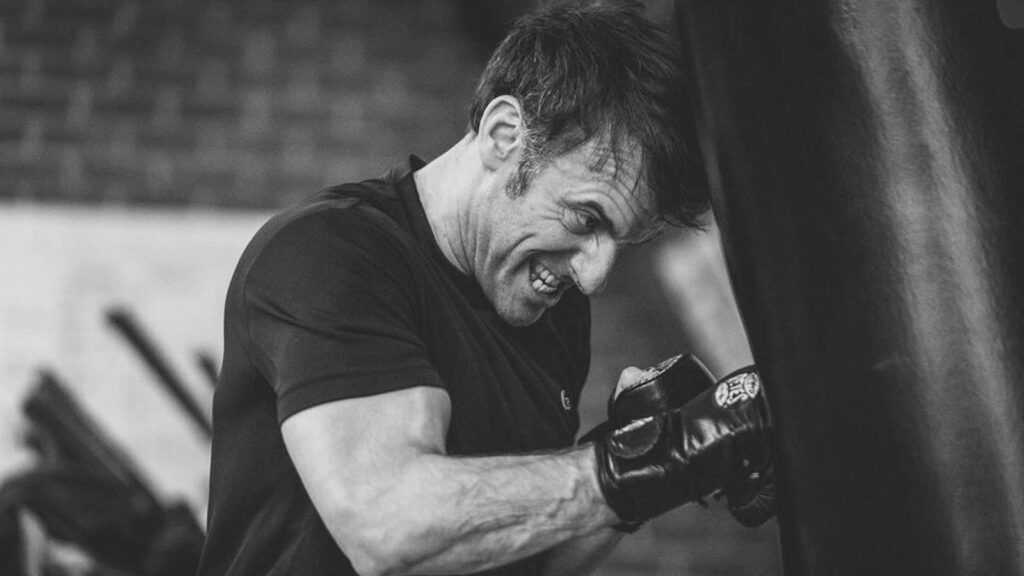
Some people find it noteworthy that these images were shared while Macron was urging Europe to strengthen its response to Russia’s attacks in Ukraine. Some social media users even jokingly speculated that Macron might be gearing up for a confrontation with Russian President Vladimir Putin, who often displays his athletic abilities.
Napoleon Bonaparte

Let’s shift our focus from one French leader to another. Jacques-Louis David’s “Napoleon Crossing the Alps” is more than just a piece of art; it has become a lasting symbol of Napoleon’s military skill during the challenging Napoleonic Wars, elevating Napoleon Bonaparte to legendary status in the eyes of French society and helping him become a hero. During Napoleon’s reign, there was a significant increase in portraits commissioned by the French state. David’s work is the most famous representation of Napoleon, but it is just one of many works of art commissioned during that time. Painters and sculptors were actively commissioned to produce hundreds of works.
Angela Merkel
In addition to strict and authoritarian portrayals, Northern Irish contemporary artist Colin Davidson depicts leaders by emphasizing their human aspects.

In 2015, Davidson portrayed the then-German Chancellor Angela Merkel for Time magazine. Through this portrait, Davidson aimed to showcase Merkel’s human depth rather than her political identity. He expressed his intention to make the sense of empathy and compassion palpable in his portrayal.
Winston Churchill
Yousuf Karsh’s portrait of Winston Churchill during World War II exemplifies how a photograph can accurately capture the mood and essence of an influential figure. Karsh mentioned that the photo shoot lasted only 2 minutes, and Churchill was not particularly enthusiastic about having his portrait taken at that moment.
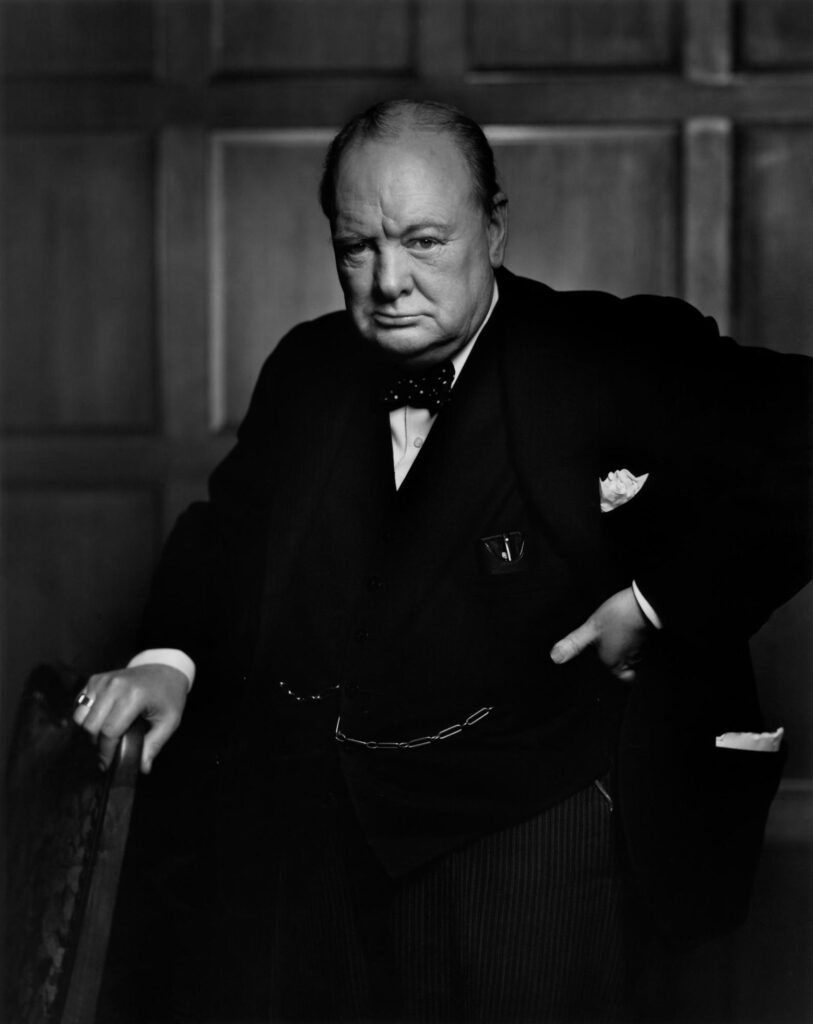
The photographer made a bold move by grabbing the cigar from his mouth to reveal the angry expression on Churchill’s face, immortalizing this moment. Churchill’s stance and expression reflect the prevailing wartime sentiments in the United Kingdom and symbolize determination in the face of powerful enemies.
Vladimir Putin
The image of Vladimir Putin, a central figure in the Russia-Ukraine conflict, riding a horse in the untamed Siberian wilderness, portrays a rugged and masculine Russian outdoorsman.
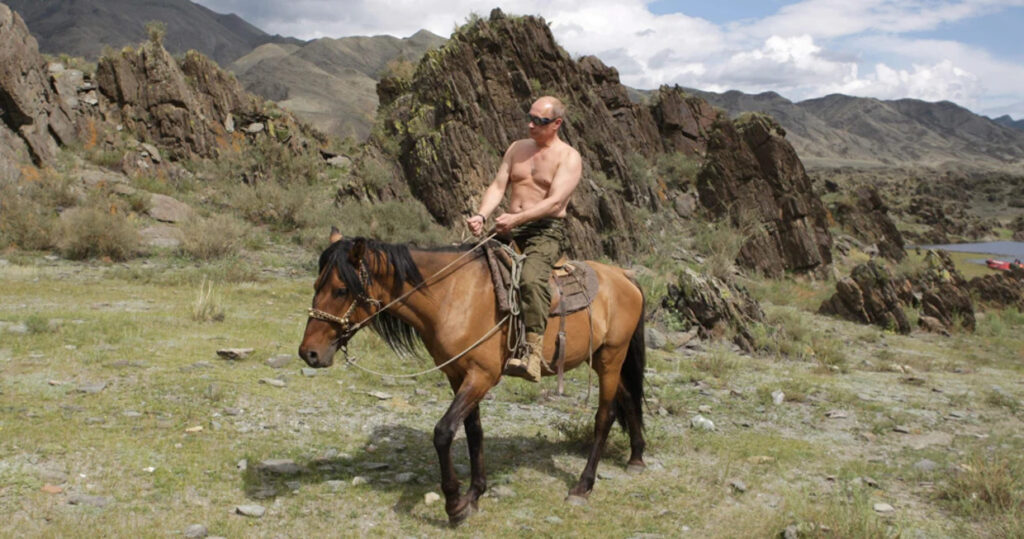
Although Boris Johnson and Justin Trudeau have mocked these images, in the eyes of the Russian public Putin is a folkloric, heroic figure riding a horse and protecting the nation from external threats.
Yevgenia Albats, the editor of the political magazine New Times, commented on Putin’s pictures, saying, “They are trying to play with Russian folk traditions. The message is: I am the master of the Russian universe. I go to our roots, to nature, to lands not occupied by anyone. I am the only warrior in this land.”
Mao Zedong
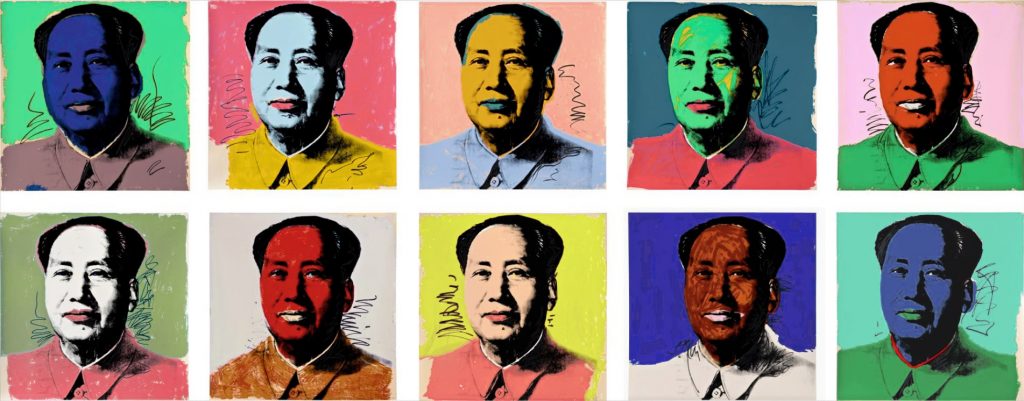
In 1972, Andy Warhol began his Mao series, portraying Mao Zedong, the founder of the People’s Republic of China. This series coincided with President Nixon’s significant diplomatic visit to China. Warhol’s Mao prints, characterized by artificial colors and mass-production screen printing, reinterpret the communist leader as a consumable object, much like the iconic Campbell’s Soup Can, rather than a symbol of political ideology. This blurs the lines between communism and capitalism.

